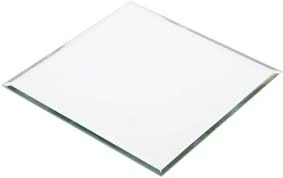

Understanding Low-E 340 Glass A Key Component in Energy-Efficient Buildings
In an age where energy efficiency is paramount, the choice of materials in construction plays a significant role in achieving sustainable architecture. One such material making strides in the world of glass is Low-Emissivity (Low-E) 340 glass. This specialized type of glazing is designed to enhance energy efficiency by minimizing heat transfer, making it a preferred choice for both residential and commercial buildings.
What is Low-E Glass?
Low-E glass features a thin, transparent coating that reflects infrared energy while allowing visible light to pass through. This coating works by reducing the amount of heat that can enter or escape from a building. The “340” in Low-E 340 glass refers to the specific wavelength of light that the coating is optimized to reflect. This means it effectively manages solar heat gain and minimizes thermal loss, which is particularly valuable in climates that experience extreme temperature fluctuations.
The Benefits of Low-E 340 Glass
1. Energy Efficiency One of the primary advantages of Low-E 340 glass is its ability to significantly lower energy costs. By reflecting radiant heat back into the building during the winter and keeping it out during the summer, it helps maintain a stable indoor temperature. This reduces the reliance on heating and cooling systems, contributing to lower energy bills.
2. Comfort With its excellent thermal insulation properties, Low-E 340 glass enhances comfort within a building. It reduces cold drafts in winter and keeps the indoor environment cool in summer, thus creating a more pleasant living or working space. Users can enjoy natural light without the common discomfort of fluctuating temperatures near windows.
3. UV Protection Low-E 340 glass helps protect interior furnishings from harmful ultraviolet (UV) rays. Prolonged exposure to UV light can cause fabrics, artwork, and flooring to fade, leading to decreased aesthetic value and increased costs for replacement. By blocking a significant amount of these rays, Low-E glass extends the lifespan of interior items.

4. Environmental Impact In a broader context, the use of Low-E 340 glass contributes to environmental sustainability. By reducing energy consumption, buildings can decrease their overall carbon footprint. This aligns with global efforts to combat climate change and promote environmentally friendly construction practices.
5. Aesthetic Versatility Available in various styles and thicknesses, Low-E 340 glass can be used in a wide range of architectural designs. Whether for sleek modern facades or traditional window styles, it offers both functionality and beauty. This makes it an excellent choice for architects looking to balance form and energy efficiency.
Installation and Performance
Installing Low-E 340 glass requires skilled professionals to ensure that the glazing performs optimally. It is essential to consider factors such as orientation, climate, and the specific needs of the building when selecting Low-E glass. Proper installation not only enhances performance but also maximizes the benefits of the Low-E coating.
The performance of Low-E glass can be evaluated through its U-factor and Solar Heat Gain Coefficient (SHGC). The U-factor measures how well the glass insulates, while the SHGC indicates how much solar heat is transmitted through the glass. Low-E 340 glass typically features a low U-factor and a moderate SHGC, making it an ideal choice for various climatic conditions.
Conclusion
In summary, Low-E 340 glass represents a significant advancement in glazing technology, providing essential benefits in energy efficiency, comfort, UV protection, and aesthetics. As the demand for sustainable building practices continues to grow, materials like Low-E 340 glass will play an increasingly vital role in shaping the future of architecture. Embracing this innovative technology not only benefits individual buildings but also contributes to a more sustainable and energy-efficient world.